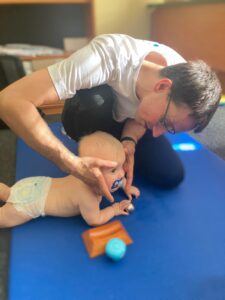Zoga Therapy in Pediatrics- Structural Balancing Module 2, Radom, Poland

Course details:
Date: 18-22.10.2023
Hours: 9:00 - 17:00
Teachers:
Agnieszka Wójtowicz
Detailed information:
medicos.com.pl
Course information
Leader: Agnieszka Wójtowicz
Date: 18-22.10.2023
Location: Radom
Contact: medikos.com.pl
Zoga Therapy in Pediatrics- Structural Balancing Module 2

Training Objective and Outcomes:
During the training you will gain knowledge and skills regarding:
Manual work, including soft tissue release techniques supported by the ability of precise structural and functional assessment. This method is very compatible with the principles of alignment used, for example, in NDT-Bobath therapy and is a very good preparation and complement to neurodevelopmental therapy. The training will focus on areas that are often challenging for therapists when working with children with neurological problems.
You will learn:
Methods of manual work that will increase your structural understanding of the relationships between many areas of the body, and which are used to show how stability determines proper function and how its disruption can lead to dysfunction. Once the relationships between the structures that create continuity are understood, you will learn to examine and evaluate their functions and work to restore balance and ease of function for these structures.
Training Program:
| Description of the scope of training | |
| Hip Joint Fans
The organization of the pelvic muscles around the three fans has a balancing effect on tilting and torsion. |
|
| 2 | Abdominal, Chest and Breathing
Structural changes in the chest can affect breathing, upper extremity mechanics, and the head, neck and jaw. This portion of the training demonstrates how the relationship of the thorax to the pelvis can positively affect the mechanics of the thoracic spine. |
| 3 | Shoulder Tapes & Functional taping
Soft tissue techniques for shoulder girdle muscles. Structural work in children with various neurological problems. |
| 4 | Structural analysis – interpretation of structural and functional compensations. Structural work in children with various neurological problems |
| 5 | Hip Joint Fans |
Initial participant requirements:
Education: physiotherapists, physicians, physiotherapy students who have completed Module 1 or other ATSI training
Organizer:
Sign up on the organizer’s website
